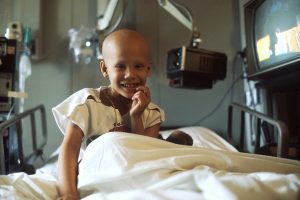 When a cancer patient receives the news that their cancer is in remission, it is joyous, celebratory news. However, being in remission is not the same thing as the cancer being gone, because there is always the chance, however slim, that the cancer could return. Until five years of being in remission have gone by, doctors do not consider a cancer patient to be completely cured of the disease. As happy as the remission news may be, this thought will always be in the back of the patient’s mind.
When a cancer patient receives the news that their cancer is in remission, it is joyous, celebratory news. However, being in remission is not the same thing as the cancer being gone, because there is always the chance, however slim, that the cancer could return. Until five years of being in remission have gone by, doctors do not consider a cancer patient to be completely cured of the disease. As happy as the remission news may be, this thought will always be in the back of the patient’s mind.
For anyone whose cancer returns, it is obviously devastating news- the antithesis of remission news. It is especially devastating when children, some of the fiercest fighters and survivors there are, experience a return of their cancer. The statistics for childhood cancer cite that 80% of children and adolescents diagnosed with cancer will survive for at least five years following their diagnosis; however, 30% of childhood cancer survivors will experience a secondary cancer in their lifetime. New findings out of Washington D.C. from the American Association of Cancer Research meeting held April 3 finds that 11.5 percent of childhood cancer survivors carry mutations that increase their risk of a second cancer.
The study, conducted at the St. Jude Children’s Research Hospital in Memphis, examined 3,007 survivors of pediatric cancer who routinely receive medical treatment at the hospital. Among this group, 29 percent developed new tumors (usually in the breast, thyroid, or skin) by the age of 45. The researchers obtained this data by examining the 156 genes known as cancer predisposition genes, 60 of which carry a high risk for disease, where just one mutated copy in each cell is enough to cause cancer. Nearly 6 percent of the survivors had a mutation in one of these genes. The study also found that patients who had received radiation therapy as children had an increased risk of certain types of cancers including breast, thyroid, and tumors in connective tissues as opposed to those who did not receive radiation that had an increased risk of any type of cancer.
According to researchers, the findings are promising, as they could could contribute to future prevention efforts. These findings give researchers a clearer understanding of the role adverse reactions to treatment play compared to the role of genetics. According to pediatric oncologist David Malkin, this study is “a nice first step” because it validates the connection many scientists already believed in between genetics and second cancer risk. These findings will allow researchers to create prediction models looking at treatment and genetics in order to categorize survivors into different risk groups. Ultimately, the more scientists know about cancer and risk factors, the better informed they will be to prevent it from returning.
